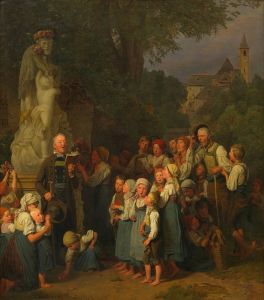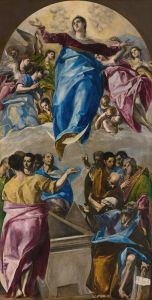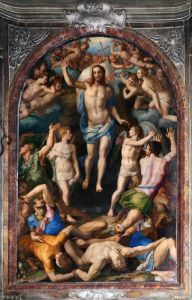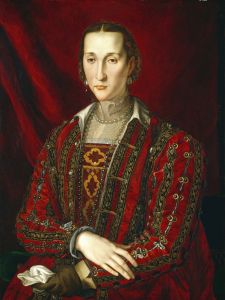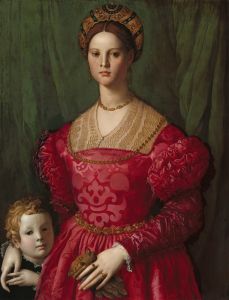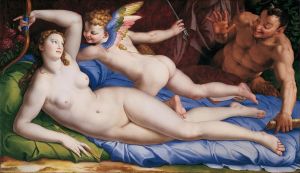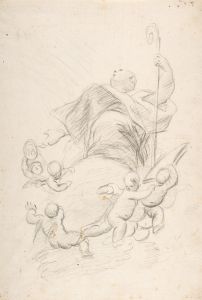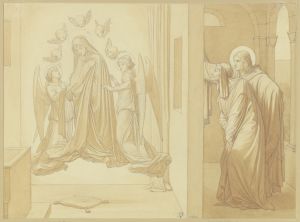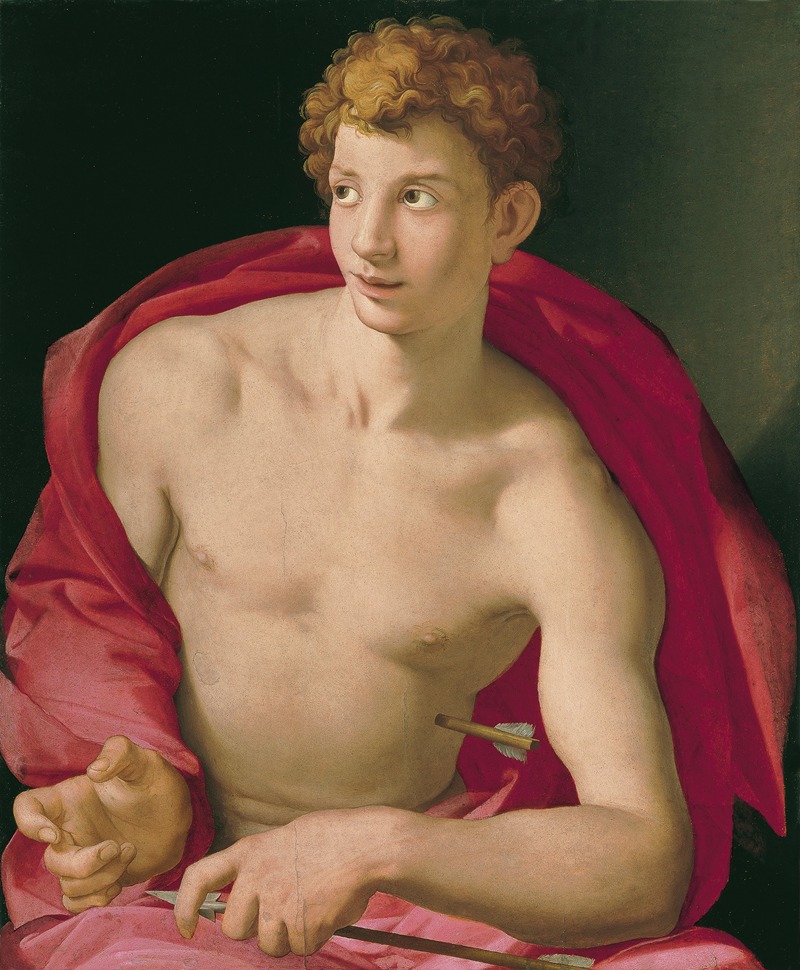
Saint Sebastian
A hand-painted replica of Agnolo Bronzino’s masterpiece Saint Sebastian, meticulously crafted by professional artists to capture the true essence of the original. Each piece is created with museum-quality canvas and rare mineral pigments, carefully painted by experienced artists with delicate brushstrokes and rich, layered colors to perfectly recreate the texture of the original artwork. Unlike machine-printed reproductions, this hand-painted version brings the painting to life, infused with the artist’s emotions and skill in every stroke. Whether for personal collection or home decoration, it instantly elevates the artistic atmosphere of any space.
Agnolo Bronzino, an eminent Italian Mannerist painter of the 16th century, is renowned for his sophisticated portraits and religious works. Among his oeuvre, the painting "Saint Sebastian" stands out as a significant religious artwork. Created around the mid-16th century, this painting exemplifies Bronzino's mastery of the Mannerist style, characterized by its elegant figures, refined use of color, and complex compositions.
"Saint Sebastian" depicts the Christian martyr Saint Sebastian, a popular subject in Renaissance art due to his dramatic story and the opportunity it provided artists to explore the human form. According to Christian tradition, Sebastian was a Roman soldier who converted to Christianity and was subsequently sentenced to death by being tied to a tree and shot with arrows. Miraculously surviving this ordeal, he was later martyred by being clubbed to death. This narrative of suffering and resilience made him an emblematic figure for artists to portray.
In Bronzino's depiction, Saint Sebastian is presented as a youthful, idealized figure, embodying the Mannerist fascination with beauty and anatomical precision. The saint is often shown in a contrapposto pose, a stance that highlights the elegance and grace of the human body, which was a hallmark of Mannerist aesthetics. Bronzino's attention to detail is evident in the rendering of Sebastian's musculature and the delicate handling of light and shadow, which lend the figure a sculptural quality.
The color palette in "Saint Sebastian" is typical of Bronzino's work, featuring cool, harmonious tones that enhance the serene yet poignant atmosphere of the scene. The use of light is particularly noteworthy, as it accentuates the contours of Sebastian's body and creates a sense of depth and volume. This careful modulation of light and color reflects Bronzino's skill in creating a lifelike yet idealized representation of the human form.
Bronzino's "Saint Sebastian" also reflects the influence of his mentor, Pontormo, another leading figure of the Florentine Mannerist movement. The painting's composition and emotional intensity can be seen as a continuation of Pontormo's innovative approaches, while also showcasing Bronzino's unique artistic voice. The painting's serene expression and poised demeanor are characteristic of Bronzino's style, which often emphasized grace and restraint over overt emotionalism.
While the exact date of creation and the current location of Bronzino's "Saint Sebastian" are not definitively documented, the work remains an important example of Mannerist religious painting. It illustrates the period's artistic transition from the harmonious ideals of the High Renaissance to a more stylized and expressive approach.
In summary, Agnolo Bronzino's "Saint Sebastian" is a testament to the artist's technical prowess and his ability to convey complex religious themes through the lens of Mannerist aesthetics. The painting captures the delicate balance between beauty and suffering, a duality that resonates with the viewer and underscores the enduring appeal of Saint Sebastian as a subject in art history.







